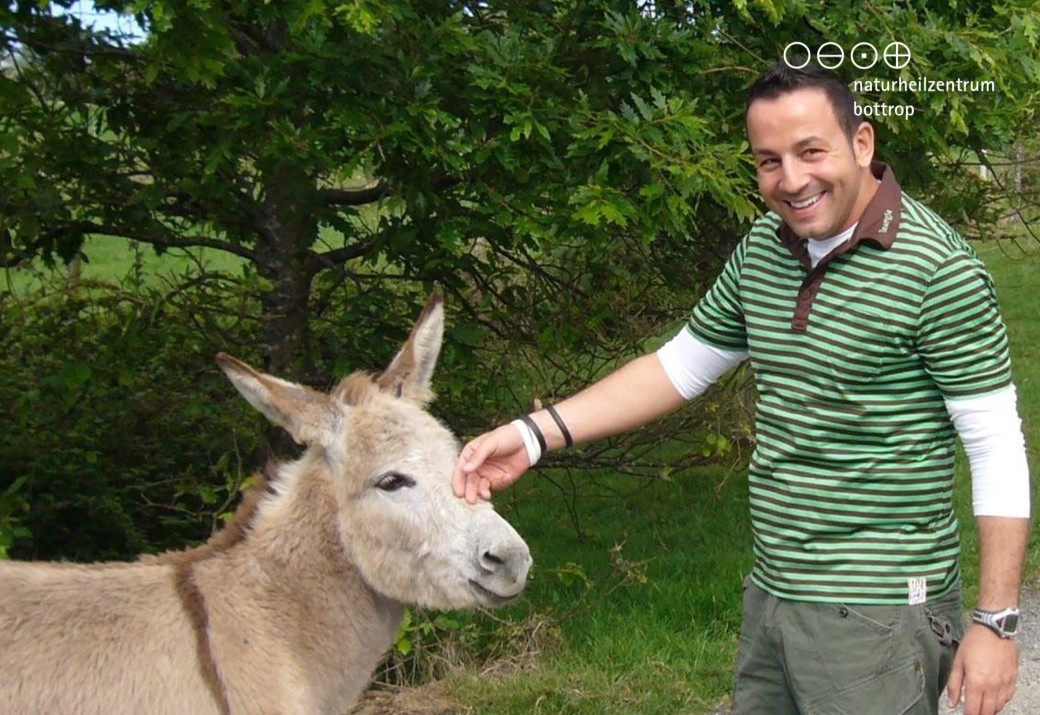Friends for life – how (domestic) animals keep us healthy

Tweet yourself one!
Soon it is again so far: the spring bloomers stick under the gradually warmer becoming rays of the sun the little heads from the earth and the first domestic singing birds let still timidly hear their melodies. This not only sounds good, but even has a therapeutic value: scientists at the Max Planck Institute for Human Development and the University Medical Center Hamburg-Eppendorf (UKE) recently found out that birdsong is good for mental health. The study’s findings suggest that listening to birdsong reduces anxiety and paranoia.
In this context and in view of the approaching spring, there is the recommendation to the news article with the topic Forest Bathing: With an extended spring walk in the forest, you can namely do several healthy things at once: Get courage from birdsong, get rid of the new year’s kilos while walking, do something for your heart and circulation with “Shinrin Yoku” (the Japanese forest bath) and relieve your joints while walking on the soft forest floor!

Positive effect
After this short excursion into the nature it goes to the actual topic or out of the forest into the cozy home to the animal favorites. Whether tomcat Carlo or pug Fidel, hamster Konrad or budgie Fips: Many of you can certainly confirm the Loriot saying that “a life without a pug […] is possible, but pointless”: At least one pet lives in 47 percent of all German households. The hit list is headed by 16.7 million cats (26 percent), followed by 10.3 million dogs (21 percent) and 4.6 million small animals such as hamsters, guinea pigs or Mongolian gerbils. And like songbirds, pets have a decidedly positive effect on mental and physical health.

Dogs prolong life
That dog owners live longer after a stroke or heart attack is shown by a study from Sweden published in 2019. The authors analyzed all cases of stroke or heart attack in Swedes over 40 and differentiated between different constellations (with/without partner/child/dog). Singles with a dog had a 33 percent higher chance of surviving a heart attack in the long term than those living alone without a dog. Similarly, the Canadian scientist Dr. Caroline K. Kramer from Toronto out: The author, proud dog owner, and its colleg:in evaluated all studies to the topic dog from nearly 70 years again. With amazing result: The most faithful friend at the side of Humans can reduce the mortality of the general population by 24 percent. If a heart attack was already present, the risk even decreases by 65 percent. A not quite insignificant portion of it may have the plus at movement, from which dog owners profit inevitably – with which we would be almost already again with the forest walk ..

Clear head thanks to Bello and kitty
Pets like dogs and cats, by the way, not only improve the quality of life, but can also protect against mental decline. This is true at least if the joint relationship lasts five years or more. For her study, presented at last year’s meeting of the American Academy of Neurology, Dr. Tiffany Braley of the University of Michigan examined a total of more than 1,300 older People (average age 65) with normal cognitive abilities at the start of the study. Just over half of the study participants owned a pet, and for nearly a third, it had been part of the household for five years or more. During the six-year study, the participants repeatedly underwent tests to check their brain performance. Particularly in the case of long-term Human-animal relationships, the owners showed a significantly lower decline in their cognitive abilities.

Hope for fibromyalgia patients
Fibromyalgia (or “muscle fiber pain” in German) is a condition characterized by generalized constant pain that is not known exactly where it comes from. Therapy is difficult because medications often have only a temporary effect and waiting for a place for cognitive behavioral therapy can take a long time. In terms of complementary therapies, the current guideline recommends meditative movement therapies such as yoga, tai chi, or qigong, as well as acupuncture. On the before recommended alternative therapies patient:in the Bottroper center for nature welfare procedures set already for nearly 3 decades. Particularly with Schuppenflechte, Neurodermitis, asthma and allergic illnesses is above all “Snakemed” here a means of the choice not to be underestimated. Snake venom therapy in naturopathic practice is appreciated by sufferers as a possible supportive and minimally invasive alternative precisely because of its range. Not least because of the individual dilution or homeopathic dosage (see also here).

Now researchers in the U.S. have found that fibromyalgia sufferers may also be helped with animal-assisted therapy, reports the German Medical Tribune: For a randomized trial, 111 fibromyalgia patients participated in a one-time, 20-minute session with a therapy dog and its master. Before and after the session, researchers asked patients about symptoms as well as their emotional state. The control group consisted of 110 patients who spent 20 minutes with the dog handler only. In both groups, the scientists measured an improvement in emotional and physical well-being. However, the improvement was more pronounced in the interaction with the therapy dog!

Stroking out the cuddle hormone
Science proves it: but also from many years of experience, alternative practitioner Christian Rüger, institution manager at the Naturheilzentrum Bottrop, knows a thing or two about the relationship between animals and Humans: “Stroking and cuddling with an animal (especially if it’s your own pet) reduce stress by releasing the hormone oxytocin. This neurotransmitter is produced by the hypothalamus and has the effect of, among other things, causing feelings of happiness – that’s why it’s also called the ‘cuddle hormone’.

For this, there is a recommendable blog article from the naturopath in the nabo magazine on the topic “natural medicine with fur“. Fitting – the practical test in the YouTube video about the “cow cuddling“!






